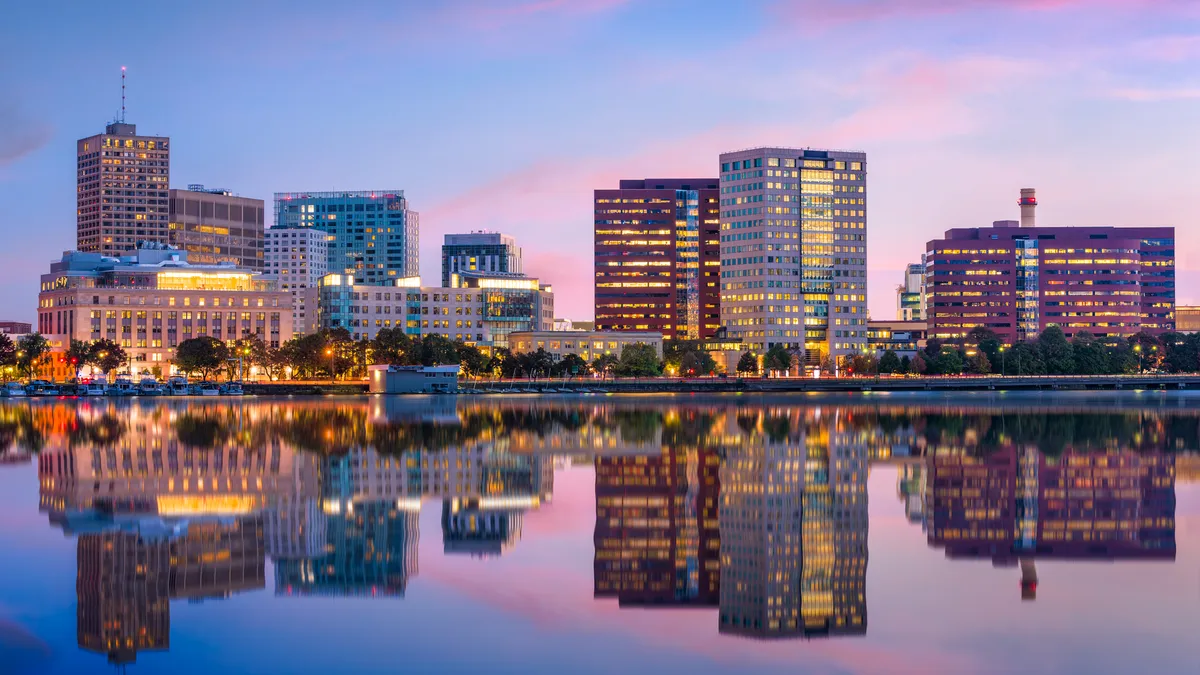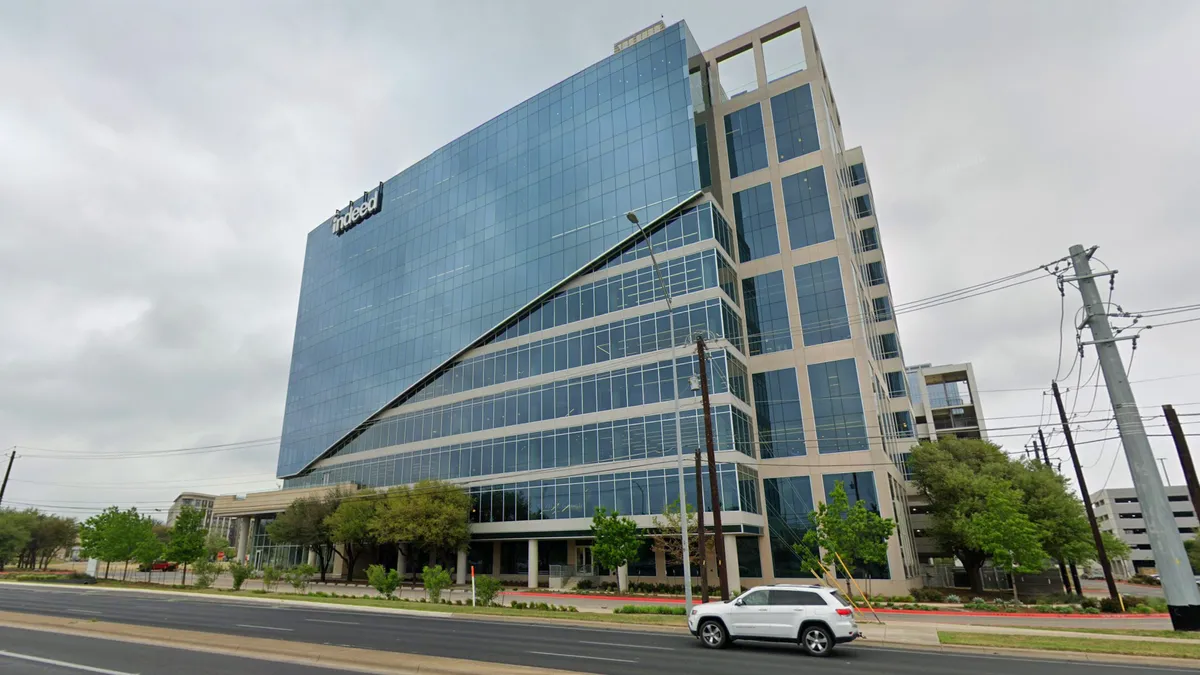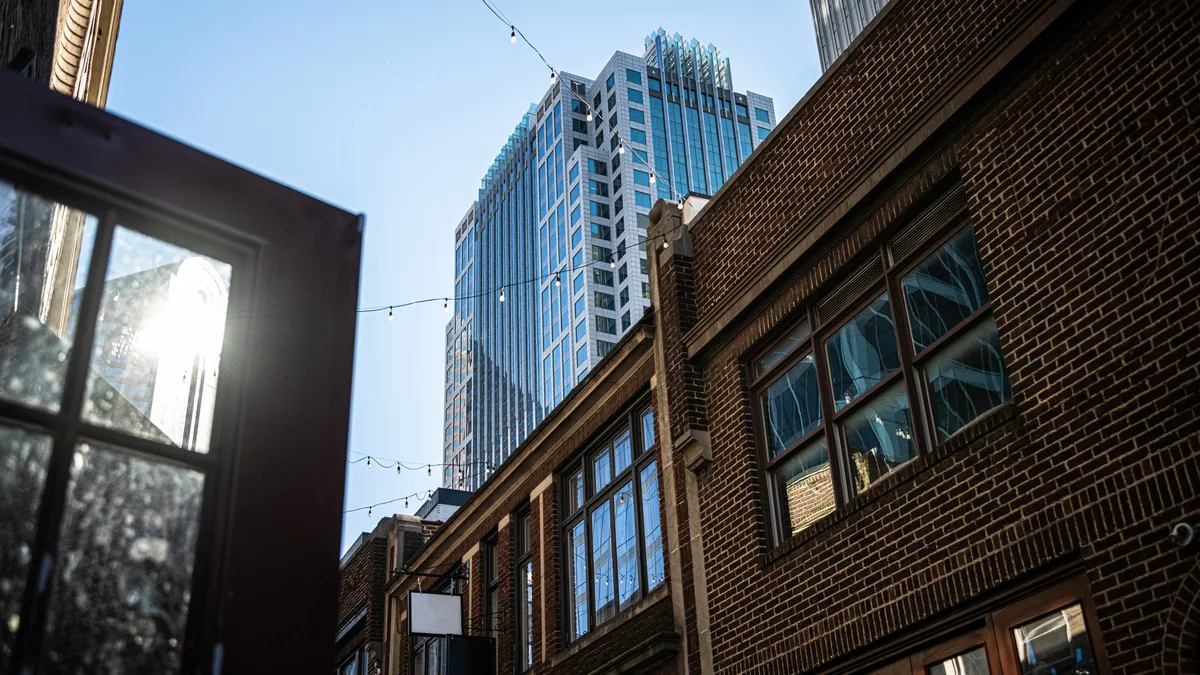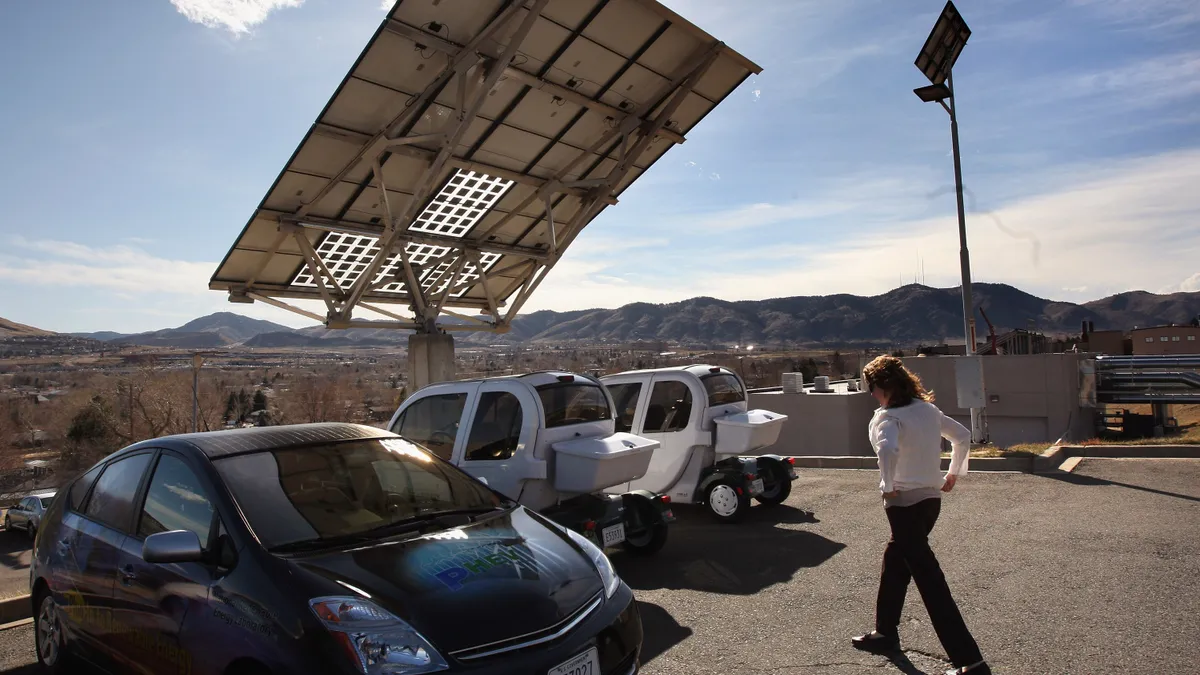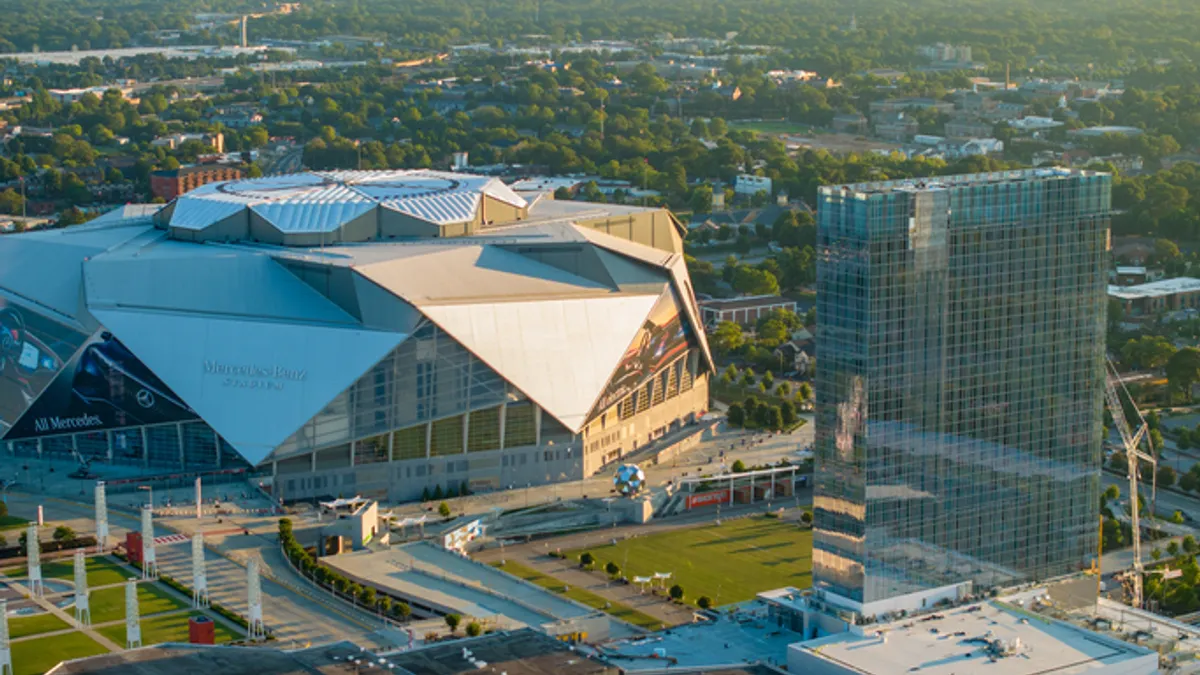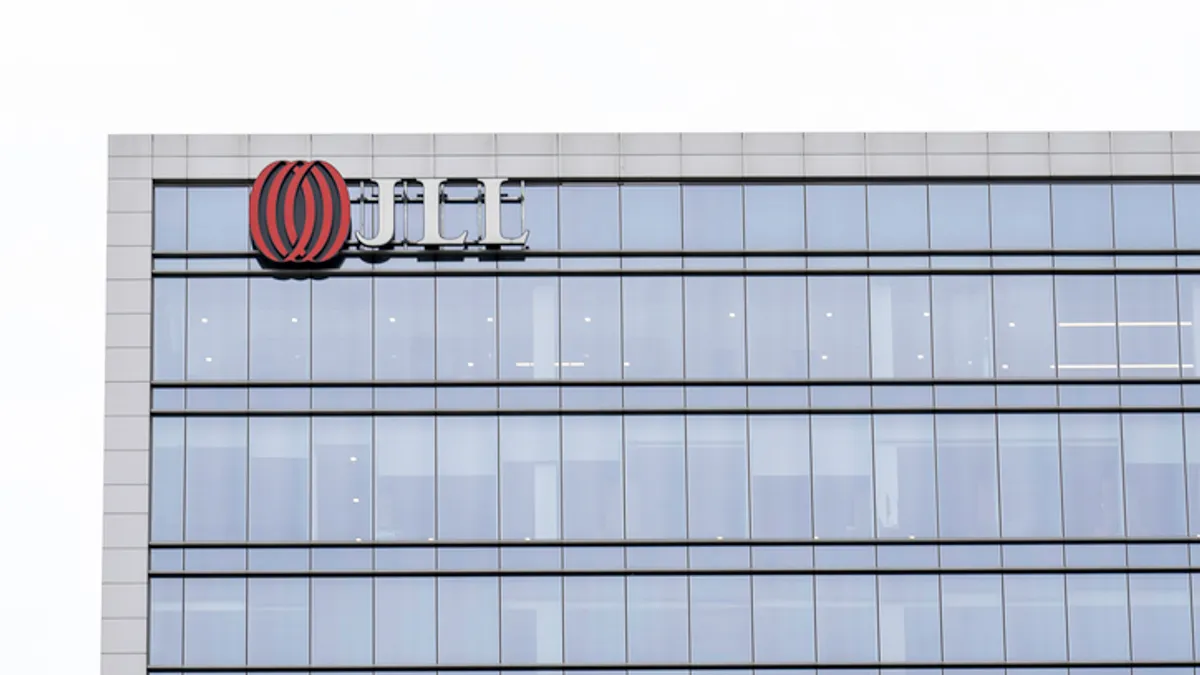Many states in the U.S. are passing new building codes or updating existing codes to advance climate goals and achieve net-zero targets. But concerns over prohibitive costs are driving pushbacks from builders, architects, facilities managers and property owners, resulting in delayed implementation.
City officials across states like Massachusetts, California and Arizona are trying to ease those concerns with a reasoning that slashing greenhouse gas emissions, turning away from fossil fuels and electrifying buildings will eliminate the need for retrofits. Officials say this will result in energy savings that will compensate for cost increases, but that's a tough sell for facilities managers.
“You’ve got to have multiple conversations with facilities managers to sell energy efficiency as a revenue stream,” Dan Arant, a climate and sustainability expert at Brightly, told Facilities Dive. Brightly, a wholly owned subsidiary of Siemens, works with facilities managers to help them achieve more sustainable communities through strategic asset management solutions.
“In the public sector, you’ve got a very steady revolving door of decision-makers—council members, municipal boards, lifetime appointees, and the like. If you’ve got a panel of about five council members that drive decision-making for a municipality, they’re probably there for three to five years. Most of them don’t think forward in terms of long-term capital planning. So, our facilities managers don’t have thoughtful capital budgets. They live in a world of deferred maintenance, and that makes it hard to get funding for investments in energy efficiency,” he explained.
Elizabeth Beardsley, senior policy counsel at the U.S. Green Building Council, pointed to a fear of change among builders who have been navigating through building cost increases since COVID-19. “I think there’s a group that’s vocally opposing building code changes from legislators, governors and energy offices. [But] the whole idea is that you update energy codes every three years, so it’s gradual and the market can learn those practices as they go along. But, when there’s a delay, then it feels like a hit,” she told Facilities Dive during a government briefing on an update that USGBC is developing to define a rating systems leadership standard that aligns with LEED v4.1 targets.
Nevertheless, these code changes are “important in terms of where we’re heading toward future climate. We’ll keep working on it with our allies,” Beardsley added.
Caving into pressures from a powerful builders’ association group, North Carolina’s Building Code Council delayed a vote on a proposed overhaul of building energy efficiency rules to December. The state’s Department of Insurance told Facilities Dive that the decision would give time for city staff to prepare two reports detailing the costs involved in implementing the proposed changes in the building energy efficiency rules.
“It’s valid to consider the cost ramifications of mandates. If I were a contractor or building owner, especially in this new code environment, I would ask whether the juice is worth the squeeze, whether it’s going to cause headaches that will be difficult to pass on to tenants, occupants and property owners,” Arant said.
North Carolina has a strong political lobbying presence against sustainability, he noted, stating that it is important to consider whether the pushback against those changes is coming from “a thoughtful argument as to why this could be bad, or whether it’s just a knee-jerk reaction.”
Similarly, Vermont postponed the implementation of a proposed residential building energy standard to July 2024. The standards laid out in the state’s Residential Building Energy Standards document were last implemented in 2020, and have been due for an update in keeping with International Energy Conservation Code norms. But the decision to hold off on the update stems from builders’ concerns that rushing to meet the new standards could compromise building oversight and provide insufficient time to train builders and contractors.
HR&A Advisors partner Jonathan Meyers, who advises public and private sector organizations on the financing and implementation of complex real estate projects, pointed out that the new code requirements feed into pressures that builders are facing to develop new residential units amid a housing shortage in the state. “In Burlington [Vermont], there’s a lack of housing supply. That creates an issue with affordability. And that creates complications for builders who are saying, ‘We’re already contending with a housing problem. but you’ve now made it more expensive for us to build new housing,’” he said in an interview.
California is also contending with a housing crisis. Against that backdrop, the state has voted to amend its existing building code to remove barriers to adaptive reuse projects, which are expected to save as much as 75% of embodied carbon emissions compared to new building construction. Building on legislation to simplify requirements for adaptive reuse, San Francisco is inviting responses from downtown office building owners looking to convert underused commercial space into residential or other newer uses.
Kate Collignon, who works on economic development, real estate and community development as a partner at HR&A Advisors, said that San francisco’s Request for Interest does not yet translate to policy.
“It’s going to be interesting to see what kinds of responses they get. The economics of office-to-residential conversion projects in San Francisco don’t pencil correctly right now. We haven’t seen real corrections in the office market. We haven’t even seen dramatic reductions in rent as property managers took out loans before the pandemic. So, you’re not likely to see conversions unless you can accomplish direct incentives, such as tax increment financing,” she said in an interview.
More recently, developers across Massachusetts have voiced concern that new building energy efficiency codes will jack up costs. That dissent has culminated into a sense of ambivalence among Northampton officials about passing an order for the state’s pro-electrification Municipal Opt-in Specialized Stretch Energy Code.
“From the perspective of the developer, a shift from a known universe to a less well-known universe is the simplest answer to why we’re seeing pushback. You have to shift your business model and that, for any property owner or facilities manager, can be stressful,” Meyers of HR&A Advisors said. “In this instance, it is coupled with a shift to what might be, for some builders and facilities managers, newer technology,” he added, pointing to low levels of heat pump adoption in Massachusetts, relative to states like Maine.
The Massachusetts Department of Energy Resources, however, recommends implementing heat pumps to heat and cool buildings under the stretch code, stating that this process is less expensive than buildings heated with natural gas.
Meanwhile, Scottsdale, Arizona has been grappling with an outdated edition of the International Green Construction Code, or IgCC, which includes measures that are already replicated in other codes and standards. To remove this duplication of requirements, the city recently amended the IgCC to be in line with the IECC. Those changes were made by removing sections from the prior edition of the IgCC, which were interpolated with elaborate guidelines on processes that made it difficult for developers to secure building permits and let occupants in.
Here is Facilities Dive’s coverage of building code updates, changes and pushbacks so far:






